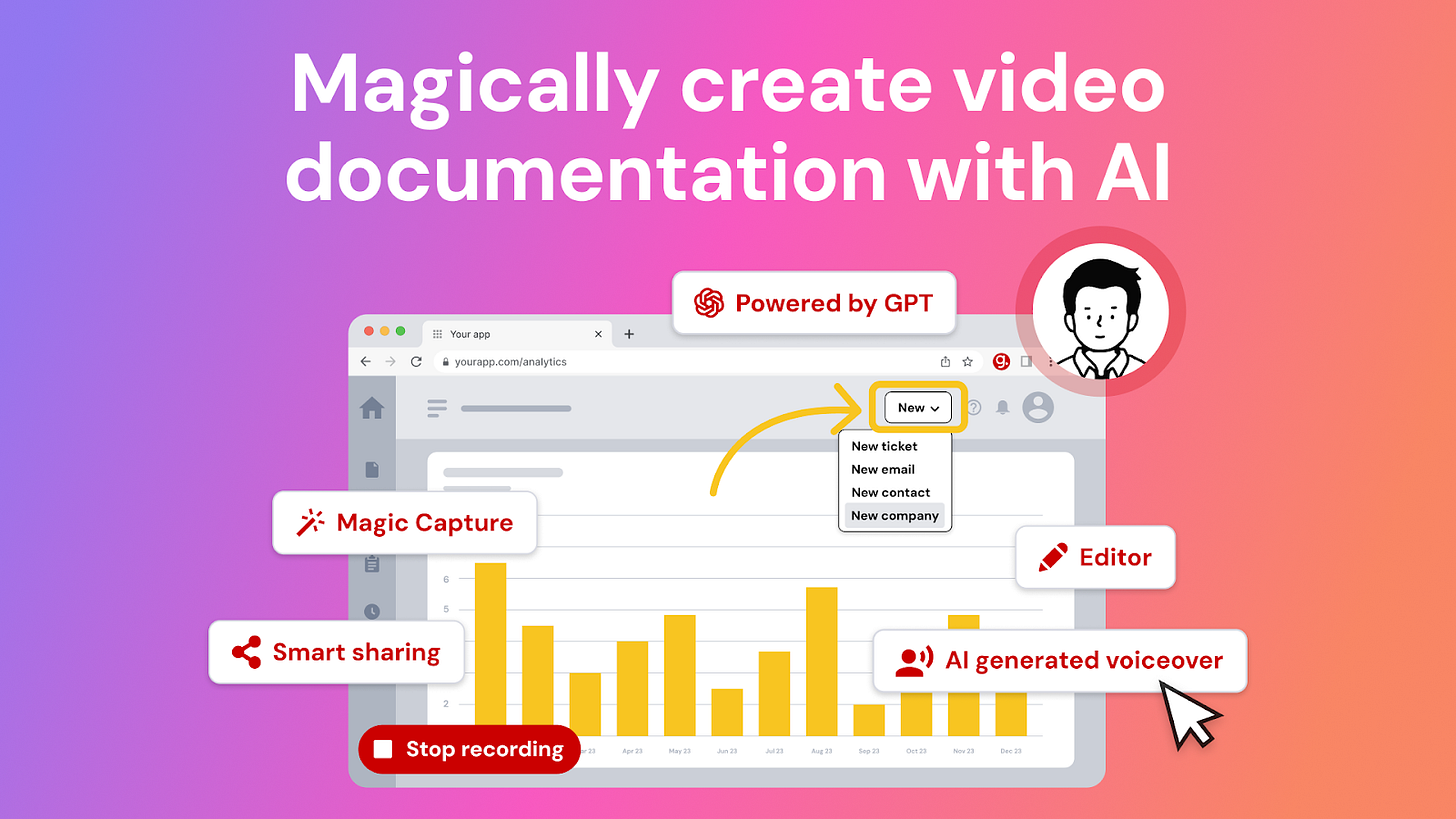The Upsell Mistake Killing Sales
📦 Why your “related” products aren’t converting, and how to fix them, Google Ads Tightens the Reins on Automation and Trust, and more!
Howdy Readers 🥰
To all our American Readers, we hope your Fourth of July is full of color and a little magic you didn’t plan for.
That’s kind of what the day’s about, bold beginnings that no one saw coming.
Happy Fourth of July!
If you’re new to Buyology then a hearty welcome to you, You’ve reached the right place alongside 50k+ amazing people, Before you forget, if someone forwarded this newsletter to you, don't forget to subscribe to our newsletter so you never miss out!
Together with Guidde
Guidde – Turn Repetitive Ops into Reusable Video SOPs
Still sending Looms, rewriting docs, or linking the same tutorials across Slack threads?
It’s time to delegate that work to AI. Guidde is a GPT-powered browser extension built for brands that want to document workflows once and never explain them again.
1️⃣ Click “capture” to record any task live from your browser
2️⃣ Let Guidde instantly generate a polished, step-by-step video guide with branded visuals, voiceover, and call-to-action buttons
3️⃣ Share or embed it anywhere from Notion and Shopify to onboarding emails and training hubs
Whether you're scaling CX, processing returns, briefing creators, or updating PDPs. Guidde turns repetitive tasks into clean, clickable SOPs that actually get used.
The best part? The extension is 100% free.
Try Guidde today and document your ops 11x faster!
📦 The Upsell Mistake Killing Sales: Why your “related” products aren’t converting, and how to fix them
Most upsells feel like a shelf suggestion: “You liked this, maybe try that too.” But in a high-intent moment, “maybe” doesn’t convert. “Obviously” does.
If your upsell doesn’t complete the decision your customer just made, you’re not raising AOV, you’re raising bounce rate.
Related ≠ Needed
Related = similar. Complementary = makes the first product better.
Redundant Upsell: Bought a face cleanser. Upsell = another cleanser in a different scent.
Complementary Upsell: Bought a face cleanser. Upsell = moisturizer that seals in hydration. Related items introduce doubt. Complementary ones remove it.
The “Complete the Set” Framework
Your upsell should pass 3 tests:
Functional: Does it enhance or finish the main item?
Expected: Would most customers assume they need both?
Effortless: Is it under 50% of the main product’s price?
Pass all three, and it feels like a “Why not?” purchase.
A DTC Beauty brand replaced a $30 product upsell with a $12 applicator tool tied to the buyer’s item.
Same traffic. Same offer logic.
The attach rate jumped from 8% → 27% in two weeks.
How to Design SKUs for High Attach Rate
Don’t just sell products, engineer attach logic.
Here’s how elite brands do it:
Accessory First: Build low-AOV SKUs (tools, minis, refills) around high-volume products
Routine Mapping: Create product flows (Step 1, Step 2, Step 3) so the next purchase is automatic
Price Anchoring: Upsells should be 15–50% of cart value, not competing SKUs
If you can’t think of a natural complement, you’ve designed a product, not a system.
Swap This Copy
Ditch: “You may also like…”
Try:
“Complete your routine with…”
“Customers who bought X always add Y”
“Step 2 of your [product] ritual”
Upsell copy isn’t discovery, it’s permission to finish the purchase.
Bottom Line: Redundant upsells compete for attention. Complementary ones reinforce the decision. When the logic makes sense before the price is considered, your AOV rises without friction. Complement. Complete. Convert.
🔍 Google Ads Tightens the Reins on Automation and Trust
Google is pushing forward on both transparency and advertiser accountability with two key updates: a clearer view into AI-powered search matches and a stricter verification policy for message assets. These changes mark an ongoing shift toward measurable automation and reduced abuse in ad communications.
The Breakdown:
1. AI Max Gets Its Own Match Type in Reports - Google Ads now labels AI Max separately in the search terms report, letting advertisers isolate its impact. Marketers can track metrics like ROAS and CPA for queries surfaced through automation logic, creative signals, and landing pages.
2. Granular Data Unlocks Better Budget Decisions – Advertisers can now compare AI Max performance directly with traditional match types like phrase or exact match by segmenting reports under the "Search terms match type."
3. Phone Verification Required for Message Assets - Starting August 1, all message assets must use verified phone numbers or they’ll be disapproved, bringing message assets in line with other formats like call-only and location assets.
Google is slowly dismantling the “black box” of automation by making AI behavior and contact methods more accountable. Marketers now get clearer insights into what’s working and are held to a higher bar on transparency.
🗝️ Tweet of the Day
Advertise with Us
Wanna put out your message in front of over 50,000 best marketers and decision makers?
Checkout our Partner Kit here🤝
At Buyology, we care about our readers and want to provide the best possible experience. That's why we always look for ways to improve our content and connect with our audience. It would be amazing if you could hit us up with feedback about our content or absolutely anything, we are always up for a chat 🥰
Thanks for your support, We'll be back with more such content 🥳



